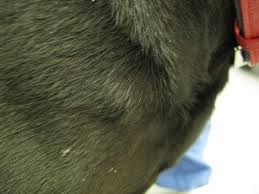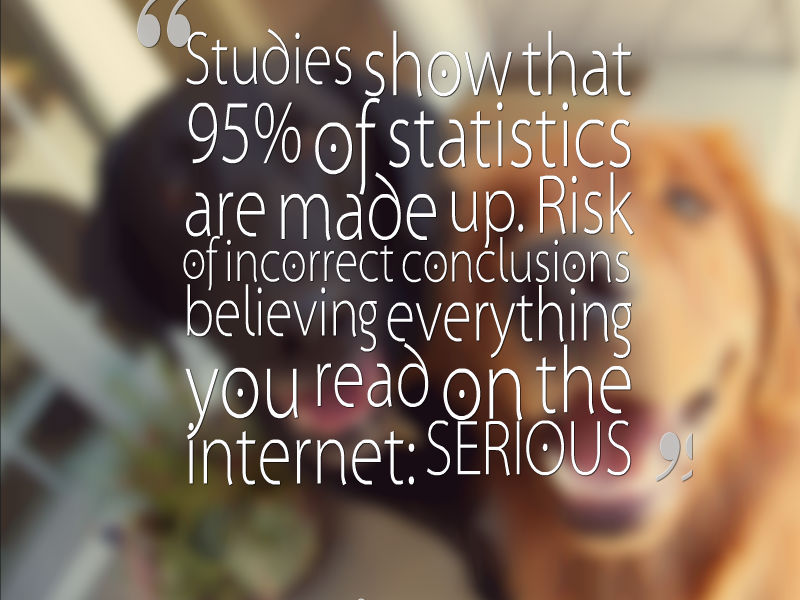About one year after I graduated vet school, I took routine screening chest radiographs of my senior Golden, Mulan. I looked them over, frowning at a small, mottled spot near her sternum.
“She has cancer,” I thought. It’s not an unreasonable conclusion to come to with Golden Retrievers. Before I panicked, I asked my colleague to look at the x-ray, and she agreed it looked suspicious. I was devastated.
I took Mulan to the local specialty hospital, where an intern I knew from vet school patted me on the back while the resident internal medicine specialist pursed his lips sympathetically. He grabbed his ultrasound machine to prepare for a guided biopsy. Before starting, he asked the radiologist to stop by to give his thoughts as to what this strange radiographic feature might be.
“What are you looking at? That? That’s normal sternum,” he said, sipping his coffee with the mildest of eye rolls before strolling out of the now-silent room.
I knew just enough to be dangerous but not enough to actually come to the correct conclusion. Along the way I dragged two other very educated colleagues with me through sheer force of conviction. Mulan lived another 4 years, by the way.
Data and Interpretation
Lots of people have asked me about the controversial results from the Truth about Pet Food’s crowdsourced food safety study. I haven’t said anything, because I couldn’t think of anything to say. It’s the same response I have when people send me this picture over email and ask me what this lump is:
The correct answer is, “I need a lot more information before I can tell you that.” Which is about how I feel about the significance of this study.
As veterinary nutritionist Dr. Weeth points out in her excellent response, scientists kind of live to nitpick and poke holes in one another’s work. It’s necessary to allow criticism because there are so many ways one can go wrong with a project- from the way the study was designed, to the implementation, to the data interpretation. It was the persistent nagging of the science community that led to the eventual discrediting of Wakefield’s autism/vaccine research paper, the public health implications of which we are still dealing today, up to and including 19 people who were sickened with measles at The Happiest Place on Earth.
Without being allowed to evaluate the entire research process, we have no way of knowing how valid the results are. A pretty infographic does not science make. Nor does protesting “it’s not junk science” mean that it isn’t.
What We Know
I’m hopeful that the full set of data will be made public, including methodology. Until then, all we can do is go by what we have been told.
Dr. Gary Pusillo of INTI services, who has the misfortune of being out of the country while all of this debate is going down, was in charge of the testing process. Thixton writes that he is a board certified veterinary nutritionist, which in theory is fantastic because it means that he would have the background in both veterinary medicine and nutrition to not only perform the studies, but interpret the results. There’s only one problem: he’s not. (Nor does he in any way present himself as one, by the way.) A board certified veterinary nutritionist is a veterinarian who is also a diplomate of the American College of Veterinary Nutrition. You may think that’s irrelevant, it’s just semantics, but it’s not.
Credentials are a big deal, as I’m sure Dr. Pusillo himself would tell you were he around. I would really love for Dr. Pusillo and Dr. Purejav to have been available to answer questions while we’re all begging to know what the heck they did, and I’d love to hear more about how they determined “risk.” They may be the most qualified people in the world, but for right now, all I have is an infographic and a consumer advocate’s word that they’re the best.
Dr. Pusillo is a PhD who provides forensic science services, which actually sounds really cool and I would love to hear more about it. I have no reason to doubt that he is an excellent scientist. He probably knows tons and tons about how to test a food for specific substances. What he may or may not know is whether or not those substances matter clinically.
Data Collection vs. Interpretation
Let’s assume that the data collection was carried out perfectly. Data collection is only half of the equation- you still have to know what to do with it. You can have all the answers in front of you and still not know the question. The scientists Thixton contracted with are out of town at the moment, so who are we going to ask to help us interpret things?
Given who’s around right now, who could interpret the limited data we have through the filter of what matters?
A microbiologist with a background in food safety would be a good start, as someone who can tell you whether or not particular pathogens are actually of concern.
Or a board certified veterinary nutritionist, who can tell you about nutrient analyses and why dry matter comparisons without calorie content is useless. Both of them have some big reservations about this project.
They know more than I do about such things, which is why I defer to their interpretation. Little things mean a lot- for example, when you say “bacteria are present” what do you mean? Does that mean live bacteria were cultured using sterile handling procedures to eliminate environmental contamination? Or did the test just look for bacterial RNA, which could come from dead bacteria that were killed during processing and therefore prove that production works as advertised? I don’t know, but that would sure make a difference.
When the company you contract with to run your tests asks for their name to be dissociated from any press surrounding you, there’s one of two conclusions: 1. They were not happy about how their data was manipulated in the interpretation stage and didn’t want to be associated with bad science; 2. Big Pet Food Cabal. We may never know. *shrug*
A victory for food safety
I like to look at the bright side of things, and for reasons I can’t fathom, what I’ve found to be the biggest findings of the study are barely mentioned.
What are the three most common concerns I hear about pet food safety?
- melamine
- pathogens of most dire human significance, specifically Salmonella and Campylobacter
- pentobarbital contamination (implying euthanized rendered carcasses in pet food.)
Why were these not mentioned in the risk report?
Because they weren’t found. They did look for all of these products. All twelve tested foods were clear of the three biggest worries in recent memory to pet food safety. That’s something, don’t you think?
I’m an optimist. Let’s look at the bright side of things, what do you say!
So let’s review here: I like asking questions. I have no problem questioning consumers, colleagues, my own professional leadership. I think concerned consumers are good consumers, and I applaud anyone who is invested enough to care about what goes into their pet, be it food, drug, or plant. I have chosen not to work in the employ of companies in the field specifically so I can feel free to say what I want without worry about my job or advertisers.
That being said, I think we also have to take the Occam’s razor approach to life and assume at some point that companies are telling the truth when they tell us they aren’t actively attempting to kill our pets. There are problems, some big and some small, and those are worthy of being addressed, but if you can’t accept at the end of the day that they are generally trying to do the right thing, then we may not ever be able to come to an understanding. As part of a profession that deals with this type of distrust on a regular basis, there comes a point where you have to say, “If you’re going to insist I’m out to harm you no matter what I say then I probably should just leave now.”
So let’s end on a high note: a toast, to those who care. I think everyone’s here arguing for that reason even if the conclusions are different. Salmonella free appetizers for all.











Great Article. Like Greg Easterbrook says, “Torture numbers, and they will confess to anything.” After a few years working as a vet tech in big pharma, I’ve learned that metrics and statistics can be molded and shaped to fit almost any argument. I like to take my data with a hefty dose of salt.
I love that quote! I may have to save that away for later.
LOVE THIS POST. Thanks for weighing in Dr. V. Sharing.
Thank YOU Mel!
Great post – we agree…Show me the data!
Thanks Kate!
Great great post!!! I found the study very interesting – not because of the results, but because I knew that it would drum up chatter. I didn’t understand what I was reading and didn’t put too much thought into it, because I’m a raw feeder. But I wish that more foods had been tested.
I think we can all agree that grocery store pet food isn’t quality pet food. But what about the medium to high end pet foods? I’m curious what the results would be on those brands.
I guess that’s where I think the real interesting conversation is. So many people feed commerical (over 90% of pet owners) and I don’t see that stopping any time soon. So for those who want to continue to do so how to we help them ensure they are picking a good one? I do like the idea of transparency in pet food, but I’d like it to be backed up by research that can withstand scrutiny.
And id you would take the time to read ALL the information on Susan Thixton’s site, you would find that most pet food manufacturers aren’t willing to report any research that paints them in a bad light. With your obvious disparagement of Susan’s test results and Dr. Pusillo, I’m wondering which big pet food companies you work for.
None. And I am not disparaging Dr. Pusillo, I am disappointed that his title is misrepresented by Thixton and it makes me question the veracity of the rest of her interpretations. I am raising fair questions. Thixton does as well, but I don’t believe she has the experience and understanding to provide credible results.
Here’s a thought: If you do not feel there is merit in the work of the Truth About Pet Food’s work, campaign to force the pet food producers product to be more regulated like they are in Europe for higher standards of ingredients. Publicly exhibit all test results. How many of the American pet food producers would still be in business? A lot less.
I do not think a lot of the big companies would be on board with laws like this. It would not let them request to the FDA ridiculous new untested ingredients like leftover biodiesel grains like they recently did at the AAFCO meetings.
If you are all about more testing and solid data, let us enact a law that does a LOT more food safety testing on pet food (including disclosing the sources of their ingredients) as mandatory. Undisputed results would show the nasty state of affairs on what is being produced for pets to eat. Sadly, the big pet food companies would attempt to veto this through their friends in government. A law like this would ensure companies lose their free reign on producing whatever they feel is acceptable.
Dr. V., you say the pet food issues are being addressed. Ever hear of Chinese Jerky Treats? Look at how long THAT took to be even slightly addressed while tens of thousands of dogs died.
Kimberly, you hit it on the head. The pet foods found in grocery stores definitely is not quality food. That begs the question: why is it even allowed to be produced and sold in this country if we are so concerned over the health of our pets? Some grocery stores, such as Whole Foods, have taken an interest in the quality of pet foods they sell, but it is free reign for pet food companies elsewhere to stock grocery store shelves with the equivalent of junk food for pets..
There has to be some merit to the claims of cheap pet food not being bad for pets. Petco and Petsmart are pulling all Chinese sourced pet foods from their shelves. A volume this size of pet foods being removed would not be done unless these two chains have solid evidence of health issues for pets caused by cheap pet food.
Dr. V. did hit one point on the head I can agree on: the pet food industry secret (because they do not have to disclose the source of their ingredients): of using euthanized animals in pet food. I have my suspicions that this is a bigger problem than anyone realizes. An FDA loophole allows this practice and needs the veterinary community to stand up publicly and loudly to have it closed. Again, the big pet food companies would scream and throw temper tantrums to stop the changes in law.
The pet food industry is a dirty one and until the producers are regulated to the standards of human food, it will be profit first, pet safety second.
Thank you, thank you, thank you. It’s truly frightened to imagine just how many “experts,” credentialed or not, are in the pockets of big pet food companies. Consumer education and manufacturer transparency can only be positive for those of us who care about our animals.
What I know from a widely varied degree of personal hands on experience is that if pet food manufacturers do not refuse to answer direct questions altogether, they are extremely hesitant to give specific information. I have come across few entities that are as practised at beating around the bush. Persistence results in one of two things: eventual gain of unsavoury fact, or in abrupt dismissal of inquiry, with painfully few exceptions. That speaks volumes to me as a consumer, test or no test. The opinion of a veterinary nutrition “expert” who may or may not have received their training through manufacturer sponsored or influenced education is of no consequence to me.
Another thank you!
Very well put, I think. I have no problem with people doing studies, but I’d prefer them to be scientific. I certainly don’t like being told I don’t care about my dogs if I don’t feed them what someone else feels is appropriate, or if I refuse to give credence to a poorly laid out study. And I don’t work for any pet food companies, either.
You accept the findings that the three top worries of melamine, pathogens, and phenobarbital were not found in the foods, but question the other findings? Either the study is to be accepted completely or none of the findings are to be accepted.
I actually don’t accept any of it. I was wondering why Thixton, who does accept all of the findings, chose only to focus on what she deems as ‘red zone’ (whatever that means) without adding that the main claims that have brought her so many ardent fans over the years are, by her own research, unfounded.
I guess I could also wonder why she referred to me as a ‘guy’ when my name and photo are all over the page she appears to have read, but I’m pretty confident attention to detail is not her strong suit.
The nutritionist comment about the caloric density of the food being the basis to decide the nutritional adequacy is very pertinent. A lot of these ‘internet experts’ telling the world how to feed their pets have no clue about nutrient profiles and their relevance (one popular web magazine comes to mind).
An example is all of these ‘supplemental’ oils out there purporting to add unsaturated ‘omega 3’ or ‘6’ or what ever are in fact raising the caloric density of the meal without adding a comparable amount of other required nutrients. So are they really helping? Nutrient profiles are not based on volumes or weight they are based in caloric value of the given volume. Add more fat (energy) as a percentage of the meal you need to add more vitamin, and mineral content.